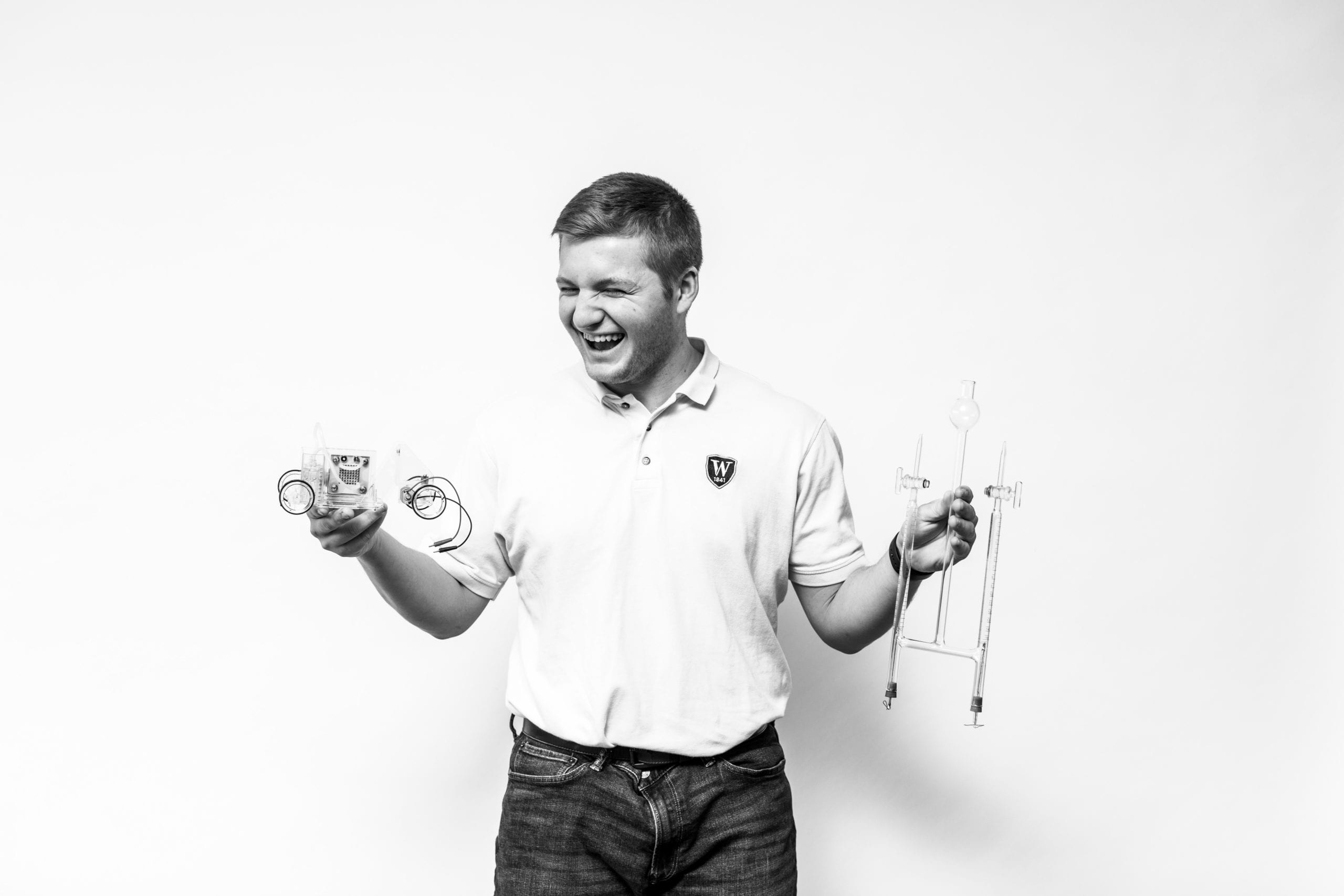The Scholar: Trevor Corsello
The Project: Water: The Battery of the Future
The Essential Question: “For my project, I explored the use of electrolysis and proton exchange membranes in a small car while using the energy yielded—versus inputted—to make assumptions and concepts for other uses.”
Why This is Important: “In a world where climate change is imminent, our dependency on fossil fuels for energy requires an alternative. The use of water and proton exchange membranes to store and release green energy came to light in the early 2000s, but has been slow to become the primary form of energy storage and use. One challenge with implementing renewable energy, such as solar or wind power, is obtaining energy when there is no energy being inputted into the system (sunshine or wind, specifically) and saving energy when an excess of energy is being inputted to the system. While proton exchange membranes and the process of electrolysis can capture only about 60 percent to 70 percent of the inputted energy, they do provide a valid alternative to fossil fuel dependency.”
My Conclusions: “Over the course of the project, I learned a great deal and was able to form some mind-boggling conclusions. The initial goal of the project was to have a car that ran strictly on water, using a proton exchange membrane and electrolysis.
“When I was able to accomplish this goal early in the trimester, I was able to explore issues regarding the feasibility of cars that run on water using hydrogen fuel cells. When I began to research hydrogen gas stations, I had the idea of a 100 percent green and self-sufficient gas station, that would eliminate nearly all of the carbon emissions from cars while capitalizing on the usage of energy being twice as efficient as it currently is. A conclusion I was able to come to was that 100 percent green self-sufficient hydrogen gas stations along with hydrogen fuel cell cars would eliminate carbon emissions from vehicles, which would reduce our carbon emission foot print by about 15 percent if fully implemented, which I found would be very possible with the proper initial financial investment.
“The concept essentially uses water a battery to store the energy from wind and the sun. The self-sufficient gas station powering an electric car concept also applies to anything that requires electrical energy, such as a house. With a similar design, houses could capture and store wind and solar energy for whenever it is needed using this system, which would reduce our carbon footprint by a much greater amount. This technology would also reduce our reliance on a grid system, allowing for houses to be self-sufficient and for homeowners to save money in the future.”


